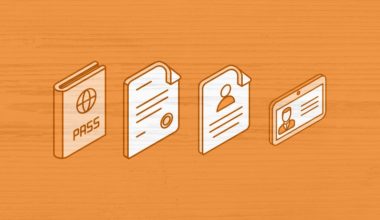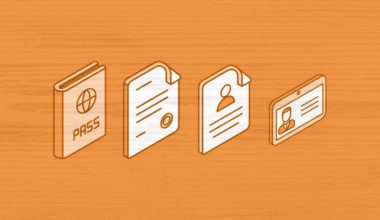As parents, you must want the best for your children, including a secure financial future. One way to achieve this is by opening a child savings account. Child savings accounts are specifically designed for young savers and come with unique features and benefits.
Table of Contents Show
In this article, we will focus on child savings accounts and discuss important factors to consider when opening one. But first, let’s begin by understanding what exactly a child savings account is and why it is beneficial for your child’s financial well-being.
What is a Child Savings Account?
A child savings account is a special bank account designed for minors between the ages of 10 and 18. It is typically opened and managed by a parent or guardian on behalf of the child. Unlike regular or employee savings accounts, child savings accounts may have specific requirements and benefits tailored to young savers.
Here are some important points to consider when thinking about opening a child savings account:
- Age Range: Child savings accounts are available for children between the ages of 10 and 18, with the consent of their parents or guardians.
- Parental Involvement: To open a child savings account, it is usually necessary to link it to a parent’s or guardian’s account. This allows for easy management and oversight.
- Minimum Balance: If the child savings account falls below the required minimum balance, the amount may be deducted from the linked parent or guardian account.
- Encourages Saving Habits: Child savings accounts can be a great way to instill the habit of saving money in children from a young age. It teaches them important financial skills and responsibility.
- Features: Child savings accounts often offer similar features to regular savings accounts, such as a passbook, email statements, balance inquiries, and an ATM/debit card with daily withdrawal limits.
- Conversion at 18: When the child reaches the age of 18, the child savings account usually becomes inactive and needs to be converted to a regular savings account
Benefits of Child Savings Account
- Growing Savings: Child savings accounts often earn interest, which means the money you put in can grow over time. This helps children save more money as the account balance gets bigger.
- Financial Safety: Having a savings account gives children and their families a feeling of financial security. It acts like a safety net for unexpected expenses or for saving money for future goals.
- Planning for the Future: A child savings account can be used to save money for things like college expenses or for plans like starting a business or buying a home. It helps children plan for the long term.
- Learning Independence and Responsibility: Managing their own savings account teaches children about being independent with money and being responsible for their finances. They learn to make choices about saving and spending their money wisely.
- Extra Benefits: Some child savings accounts offer additional advantages like special interest rates, rewards programs, or resources to help children learn more about managing money. These benefits are designed specifically for young savers.
How to Open a Child Savings Account?
Step 1: Locate and visit your nearest bank branch to open a child savings account.
Step 2: Upon arrival at the bank, speak with a bank official who can provide you with an application for a child savings account.
Step 3: Fill out the application form completely, ensuring that you provide all necessary information and any required supporting documents. This may include documents of the child as well as those of the parent or guardian.
Step 4: Submit the application and supporting documents to the bank official. They will review the documents to process the child’s savings account.
Step 5: Once the account has been successfully opened, the account holder will receive all the necessary account credentials, such as account number and any online banking login details.
What are the Documents Required to Open a Child Savings Account?
The following documents are required to open a child savings account:
- Documents of the minor, such as an Aadhaar card and birth certificate.
- Documents of the parent or guardian, such as a PAN card and Aadhaar card, for verification purposes.
- A recent passport-size photograph of the applicant.
- Proof of address.
- Proof of the relationship between the minor and the guardian or parents.
Things to Know Before Opening a Child Savings Account
- Age Restrictions: Some banks may require a parent or guardian’s account to be linked to a child savings account for children under a certain age. Older children may be able to operate their accounts.
- Account Conversion: Once the child reaches the age of 18, the child savings account may become inactive and need to be converted to a regular savings account.
- Notifications: To receive transaction alerts or other banking information, it may be necessary to enable SMS or notification features.
- Minimum Balance Requirement: Child savings accounts may have a minimum balance requirement that the account holder or parent/guardian must maintain.
- Withdrawal Limits: Be aware of any daily, monthly, or yearly withdrawal limits imposed on the account.
- KYC Process: Additional parental documents may be required as part of the Know Your Customer process for opening a child savings account.
- Security Features: Check if the bank offers protection against online theft, lost ATM or debit cards, and other risks to ensure the safety of the account.
In conclusion, a child savings account is a tool for parents to save for their child’s future. By making regular monthly deposits, parents can accumulate a significant amount of wealth over time. The accumulated funds, along with the power of compound interest, can provide financial support for the child’s education or other important expenses. Opening a child savings account typically requires parents to submit their documents and fulfill the bank’s requirements. By taking advantage of a child savings account, parents can proactively plan for their child’s financial needs and ensure a secure future.
Disclaimer: The purpose of this blog is to simplify complex processes for readers’ understanding. Please note that some information and screenshots provided may become outdated or change over time. However, we strive to keep our blogs updated and relevant to provide accurate and helpful information.










